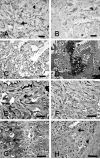Tracking expression of virally mediated BMP-2 in gene therapy for bone repair
- PMID: 16702923
- PMCID: PMC4291079
- DOI: 10.1097/01.blo.0000223989.49400.a8
Tracking expression of virally mediated BMP-2 in gene therapy for bone repair
Abstract
Ex vivo gene therapy using stem cells transduced with viral vectors is a useful method for delivering a therapeutic protein to augment bone repair in animal models. However, the duration of cell-mediated protein production and the fate of the transduced cells are unknown. We constructed an adenoviral vector encoding Myc epitope tagged bone morphogenetic protein (BMP)-2 gene (AdBMP-2). Rat bone marrow cells transduced with this vector produced biologically active BMP-2 protein, which was confirmed by Western blot analysis and alkaline phosphatase assay. Implantation of bone marrow cells infected ex vivo with AdBMP-2 caused orthotopic bone formation in mouse hindlimbs and bony union of critical-sized mouse radial defects. Immunohistochemical analysis revealed that rBMCs expressed Myc epitope-tagged BMP-2 protein for 14 days in vivo and became incorporated in the endochondral fracture callus. This novel adenovirus encoding for epitope-tagged BMP-2 can be used for immunohistochemical tracking of transduced cells in ex vivo gene therapy for bone repair.
Figures





Similar articles
-
Influence of short-term adenoviral vector and prolonged lentiviral vector mediated bone morphogenetic protein-2 expression on the quality of bone repair in a rat femoral defect model.Bone. 2008 May;42(5):921-31. doi: 10.1016/j.bone.2007.12.216. Epub 2008 Jan 5. Bone. 2008. PMID: 18295562
-
In vivo molecular imaging of adenoviral versus lentiviral gene therapy in two bone formation models.J Orthop Res. 2006 Aug;24(8):1709-21. doi: 10.1002/jor.20229. J Orthop Res. 2006. PMID: 16788987
-
Transplantation of skin fibroblasts expressing BMP-2 promotes bone repair more effectively than those expressing Runx2.Bone. 2003 May;32(5):502-12. doi: 10.1016/s8756-3282(03)00054-1. Bone. 2003. PMID: 12753866
-
Gene therapy approaches for bone regeneration.Cells Tissues Organs. 2004;176(1-3):95-108. doi: 10.1159/000075031. Cells Tissues Organs. 2004. PMID: 14745239 Free PMC article. Review.
-
Gene therapy for bone regeneration.Curr Pharm Des. 2013;19(19):3466-73. doi: 10.2174/1381612811319190012. Curr Pharm Des. 2013. PMID: 23432674 Review.
Cited by
-
Current Biomaterial-Based Bone Tissue Engineering and Translational Medicine.Int J Mol Sci. 2021 Sep 23;22(19):10233. doi: 10.3390/ijms221910233. Int J Mol Sci. 2021. PMID: 34638571 Free PMC article. Review.
-
Biologic adjuvants for fracture healing.Arthritis Res Ther. 2012 Nov 30;14(6):225. doi: 10.1186/ar4053. Arthritis Res Ther. 2012. PMID: 23198865 Free PMC article. Review.
-
The synergistic effect of autograft and BMP-7 in the treatment of atrophic nonunions.Clin Orthop Relat Res. 2009 Dec;467(12):3239-48. doi: 10.1007/s11999-009-0846-2. Epub 2009 Apr 24. Clin Orthop Relat Res. 2009. PMID: 19396502 Free PMC article.
-
Mesenchymal stem cells: mechanisms and role in bone regeneration.Postgrad Med J. 2014 Nov;90(1069):643-7. doi: 10.1136/postgradmedj-2013-132387. Postgrad Med J. 2014. PMID: 25335795 Free PMC article. Review.
-
"Same day" ex-vivo regional gene therapy: a novel strategy to enhance bone repair.Mol Ther. 2011 May;19(5):960-8. doi: 10.1038/mt.2011.2. Epub 2011 Feb 22. Mol Ther. 2011. PMID: 21343916 Free PMC article.
References
-
- Ahlmann E, Patzakis M, Roidis N, Shepherd L, Holtom P. Comparison of anterior and posterior iliac crest bone grafts in terms of harvest-site morbidity and functional outcomes. J Bone Joint Surg Am. 2002;84:716–720. - PubMed
-
- Alden TD, Pittman DD, Hankins GR, Beres EJ, Engh JA, Das S, Hudson SB, Kerns KM, Kallmes DF, Helm GA. In vivo endochondral bone formation using a bone morphogenetic protein 2 adenoviral vector. Hum Gene Ther. 1999;10:2245–2253. - PubMed
-
- Baltzer AW, Lattermann C, Whalen JD, Wooley P, Weiss K, Grimm M, Ghivizzani SC, Robbins PD, Evans CH. Genetic enhancement of fracture repair: healing of an experimental segmental defect by adenoviral transfer of the BMP-2 gene. Gene Ther. 2000;7:734–739. - PubMed
-
- Baltzer AW, Lieberman JR. Regional gene therapy to enhance bone repair. Gene Ther. 2004;11:344–350. - PubMed
-
- Banwart JC, Asher MA, Hassanein RS. Iliac crest bone graft harvest donor site morbidity: a statistical evaluation. Spine. 1995;20:1055–1060. - PubMed
Publication types
MeSH terms
Substances
Grants and funding
LinkOut - more resources
Full Text Sources
Medical

